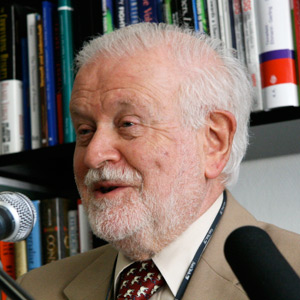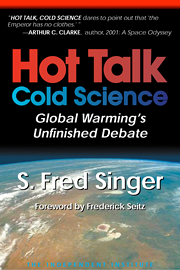The 3 July 2015 issue of Science features a remarkable editorial by Editor Marcia McNutt. Titled “The beyond-two-degree inferno,” it suggests that an anthropogenic greenhouse (GH) warming of more than 2 degrees C (global average) will literally cause hell on earth, unless we can all agree to reduce emissions of the “infernal” GH-gas carbon dioxide—preferably before or at a UN-sponsored mega-confab in Paris in December. This much-hyped event, to be attended by nearly 200 national delegations and thousands of hangers-on, has even been endorsed in a papal encyclical, referred to, somewhat irreverently, as a “Pope-sicle” by my Virginia colleague Dr Charles Battig.
McNutt’s editorial claims a “global threat to food supplies, health, ecosystem services, and the general viability of the planet.” Yet none of these threats are supported by any scientific evidence—even from the usually alarmist UN-IPCC. She fails to remind us that atmospheric CO2 is the essential ingredient for sustaining carbon-based life on Earth. The low CO2 levels during the recent ice age severely limited the rate of photosynthesis; at slightly lower levels, we and almost all living things on the Earth’s surface would just starve and die. And she takes for granted that rising CO2 will cause significant Global Warming (GW), with all the usual calamities that are recited by climate alarmists—in spite of overwhelming evidence for absence of 21st-century warming.
As geologist Dudley Hughes wrote in May 2007 in Environment & Climate News, “[L]ittle publicity is given to the large number of qualified scientists who...contend that if CO2 plays any part in global warming, it is so insignificant that it can barely be measured, let alone be the major cause.” And: “[T]he claim that increased carbon dioxide is causing ‘global warming’ ...has no more scientific foundation than the bloodletting of past generations.”
His words are backed by the five reports (in English) of the independent NIPCC (Nongovernmental International Panel on Climate Change), issued since 2008 and based on many thousands of references collected from peer-reviewed journals by nearly 100 well-qualified climate scientists; they included many papers ignored by the IPCC. The brief Overview-NIPCC volume of 2008 was translated into several European languages; the Chinese Academy of Sciences translated and published a substantial NIPCC summary volume in 2013.
But McNutt is not interested in listening to contrary evidence. “The time for debate has ended. Action is urgently needed.” What a strange position to take for the editor of a leading and (formerly) respected international science journal! She should resign her job and allow someone else to take her place—someone who recognizes that debate is essential for scientific progress.
Maybe McNutt really believes that GW has never really paused and that reducing CO2 levels can make a noticeable difference. That could happen only if she reads the evidence selectively and rejects all evidence to the contrary. Or maybe she is cynically playing along with current White House policy, even though it is completely uninformed and misguided, in the hope it will benefit Science mag and herself.
Yet another possibility is that she is naïve enough to believe that the world’s nations are actually worried about a small amount of climate warming; in reality, the game is about money and political power. She seems oblivious to the fact that China snookered Obama in their November 2014 climate agreement; but she seems really disturbed about India’s plans, and insensitive to that nation’s desperate need for reliable, secure, and low-cost electric power: “Unfortunately, [energy minister] Piyush Goyal ... intends to double his nation’s coal production by the year 2019 to meet domestic energy requirements.” India’s CO2 emissions will soon match China’s and, together, will make irrelevant any emission reductions by the rest of the world; after all, it’s the global CO2 level that counts. Could someone please explain this to McNutt?
As for myself, I have decided to drop my subscription to Science and my AAAS membership; Science is the flagship journal of the American Association for the Advancement of Science. I guess I will continue as an elected AAAS Fellow; but I am no longer proud of that distinction. I suppose, also, that any future contribution to Science—even a Letter or a Technical Comment—will not be welcome as long as McNutt or someone of her persuasion continues as editor.
Has the global warming pause really ended?
The pernicious influence of Editor McNutt’s ideology-driven science can be easily recognized in the promotion given to a fairly routine scientific paper by NOAA climatologist Thomas Karl and coauthors; however, it has very important policy implications. After making certain controversial adjustments to the surface temperature record, the authors concluded that there had been no GW pause (a.k.a. hiatus or plateau), which many researchers had rather reluctantly accepted, but that there had actually been a continuing warming trend during all of the 21st century. Their paper was published in Science-Express on June 4, with a lot of the publicity usually reserved for major discoveries.
It was finally printed in the 26June issue of Science; the comments published in Science blog were almost uniformly negative, and questioned the authors’ motives rather than the technical details of their data adjustment. This is wrong, of course; with the 3July editorial at hand, such comments might have been better addressed to the Editor.
The several NIPCC reports can be accessed free of charge at www.NIPCCreport.org. IPCC reports are available at www.ipcc.de.A critique of the latest IPCC science report was issued as a Policy Brief in Oct 2013 and can be accessed at http://heartland.org/sites/default/files/critique_of_ipcc_spm.pdf
My initial reaction (of 4June) to the Karl paper in Science-Express is seen here. Independent comments from the Science blog were reprinted here. Technical papers questioning the Karl conclusions are forthcoming—but may not published in Science; one would want to look at other scientific journals.
To sum up:The GW plateau appears to be ongoing—and is as yet unexplained. We don’t know if or when it will end. Climate sensitivity of CO2 seems to be much lower than any of the IPCC models predict—perhaps even close to zero. Thus, any policies based on GH models can be junked; fossil fuels are not the cause of climate change. So much for McNutt’s policy prescription that “...every person need [sic] to ... reduce carbon pollution [sic] by ...adopting alternative energy technologies, ...and capturing CO2 at the source.”
The two-degree limit is a political invention
The 2deg limit has nothing to do with science—and, in any case, is unlikely to be exceeded, or even reached, as things look now. As recounted in American Thinker, the 2deg limit was invented in Sweden as a pure guess—without any “evidence” from climate models that there might be some kind of discontinuity when global temperature (however it may be calculated) reaches the 2deg level.
However, the 2deg limit was widely adopted by politicians and became enshrined in folklore, when it was realized that it satisfied the “Goldilocks” principle—not too little or too large, but just right for political action against CO2, fossil fuels, low-cost and secure energy—and the economic growth all this made possible.
Consider: A limit set at 0.5deg will be dismissed with “We’ve already seen this—and nothing happened.” A limit at, say, 5deg may elicit a different kind of response: “It won’t happen soon—at least, not in my lifetime.” In fact, the whole concept of a global average is very vague; GH models tell us that warming will concentrate at high latitudes at night. So, Siberian winter nights might warm from minus 40deg all the way to minus 35deg. Is that bad?
Many economists have concluded that even a 3deg warming might on the whole be beneficial, even at the lower US latitudes, largely because of gains by the agricultural sector: longer growing seasons and fewer frosts, more rain, but mostly increased fertilization from higher atmospheric CO2 levels.
Ice ages are the real threat to mankind
The most recent glaciation covered much of the northern hemisphere with miles-thick ice and wiped out the Neanderthalers; its sudden end about 12,000 years ago led into the present warm interglacial period, which we call the Holocene. According to the Milankovitch astronomical calculations, the next glaciation is “just around the corner”—or at least a millennium or so away.
But even a “little” ice age, like one that ended only 200 years ago, would be extremely damaging to our civilization. Crop failures worldwide would lead to famines, disease, and many deaths. The December gabfest in Paris should be concerned about near-future cooling—not warming. And so should Editor McNutt.









